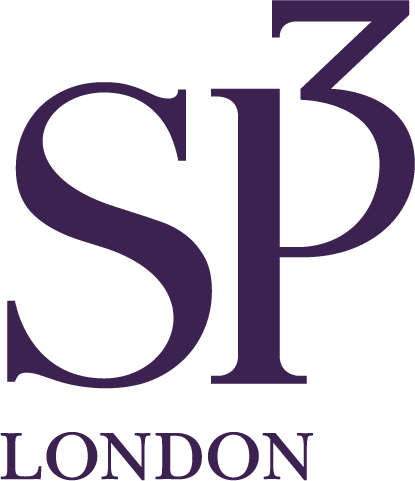Navigating Georgian Interior Design Principles
Georgian interior design refers to interiors from the Georgian period which spanned from the early 18th to the early 19th century. Characterised by high ceilings, statement pieces, intricate wallpaper and pastel colour schemes, Georgian interiors evoke a tapestry of refinement and elegance.
If you’re looking to restore your Georgian property, or have been influenced by Netflix’s Bridgerton, we’ve got you covered.
But first thing’s first, what exactly is Georgian interior design?
Introduction to Georgian interior design: What defines this period style?
Georgian interior design originated from the Georgian period, the era spanning from the reigns of the British Kings George I to George III. The style evolved over the years, embracing Palladianism, Rococo, Neoclassicism, and the Regency era.
The defining feature of Georgian design really lies in its attention to detail. You’ll find grandeur in the use of rich woods like mahogany and walnut, ornate plasterwork, and intricate mouldings across ceilings and walls.
Symmetry takes centre stage in furniture placement and design elements, often showcasing paired items like matching chairs or symmetrical ornamentation.
You’ll often find that Georgian interiors will feature statement pieces, such as chandeliers, large mirrors, and stunning fireplaces, which add to the opulence of the space. The style's enduring appeal lies in its ability to seamlessly blend traditional elements with a sense of refinement, offering a glimpse into the grace and grandeur of a bygone era.
How does architecture shape Georgian interiors?
Many Georgian buildings have distinct features such as tall windows, high ceilings, and well-defined room proportions and this has directly impacted interior design.
Tall windows allow for lots of natural light, creating airy and bright spaces. This is further accentuated by the use of lighter and pastel colour palettes.
The symmetrical layout of Georgian buildings has also translated into symmetrical interiors. Rooms are usually arranged in pairs to emphasise balance and harmony. This architectural symmetry influenced furniture placement, decorative elements, and overall design schemes within Georgian homes.
Moreover, the use of materials like fine woods such as mahogany and oak in architectural elements was echoed in furniture design, creating a cohesive aesthetic throughout the space.
What are the signature hues of Georgian interiors?
Pastels like delicate blues, serene greens, and subtle pinks dominate many Georgian Interiors and will often be complemented by accents of rich hues such as deep reds and royal blues. These colours create a sense of tranquillity and elegance within the spaces.
How are paintings and portraiture integrated into Georgian interiors to enhance their aesthetic?
During the Georgian era, paintings and portraits were integral elements in interior design, serving not just as decorative pieces but also as reflections of wealth, status, and cultural sophistication. These artworks were strategically integrated into the interiors to enhance the overall aesthetic in many ways.
How do Georgian fireplaces and mantels serve as focal points and functional elements in interior spaces?
Georgian fireplaces and mantels are central features, serving as both functional elements and focal points in rooms. Crafted with intricate designs in marble or wood, they add a touch of grandeur to any room, while also providing warmth and becoming natural gathering spots.
How has the Georgian design style been revived and adapted in modern interior design?
The timeless elegance and refined aesthetic of Georgian design have found a resurgence and adaptation in modern interior design, blending classic elements with contemporary sensibilities in various ways:
1. Architectural Detailing: Modern homes often incorporate Georgian-inspired architectural features such as symmetrical layouts, tall windows, and high ceilings. While maintaining the essence of the original style, these elements are adapted to suit current architectural trends.
2. Mixing Old with New: One key element of modern adaptations involves mixing Georgian elements with more contemporary décor. This may include incorporating Georgian furniture into minimalist interiors or pairing original features with contemporary furniture.
3. Art and Decor: Georgian-inspired artwork and decor, such as landscape paintings, mirrors with intricate frames, and ornate lighting fixtures, are reintroduced in modern spaces. These elements bridge the gap between the past and present, adding character to contemporary interiors.
4. Functionality: While embracing the classic aesthetics, modern adaptations focus on functionality. Georgian-inspired spaces are adapted to suit the needs of contemporary living, ensuring comfort and practicality without compromising on style.
SP3 London’s Georgian interior design example
The Adams House project in Regents Park stands as a testament to SP3 London's expertise in restoring and enhancing the allure of historic Georgian interiors. Renovating this Grade 2 listed Robert Adams building, spanning an impressive 9,000 square feet, demanded a delicate balance between preserving its historic charm and introducing modern functionality.
With a keen eye for detail and a commitment to honouring the property's heritage, the team diligently revived the historic features and intricate detailing that define Georgian design. Collaborating closely with the client, our focus was on aligning with their vision while expertly managing space and design elements. Our goal was to fuse the classic elegance of Georgian interiors with the contemporary needs of the client.
Conclusion
Georgian interior design stands as a testament to enduring sophistication and artistic mastery. Its timeless principles continue to inspire, offering a bridge between tradition and modernity in the realm of interior design. Embracing the elegance of Georgian aesthetics ensures a harmonious fusion of the past and present, echoing an era of refined taste and timeless beauty in contemporary spaces.
Recommended Articles






